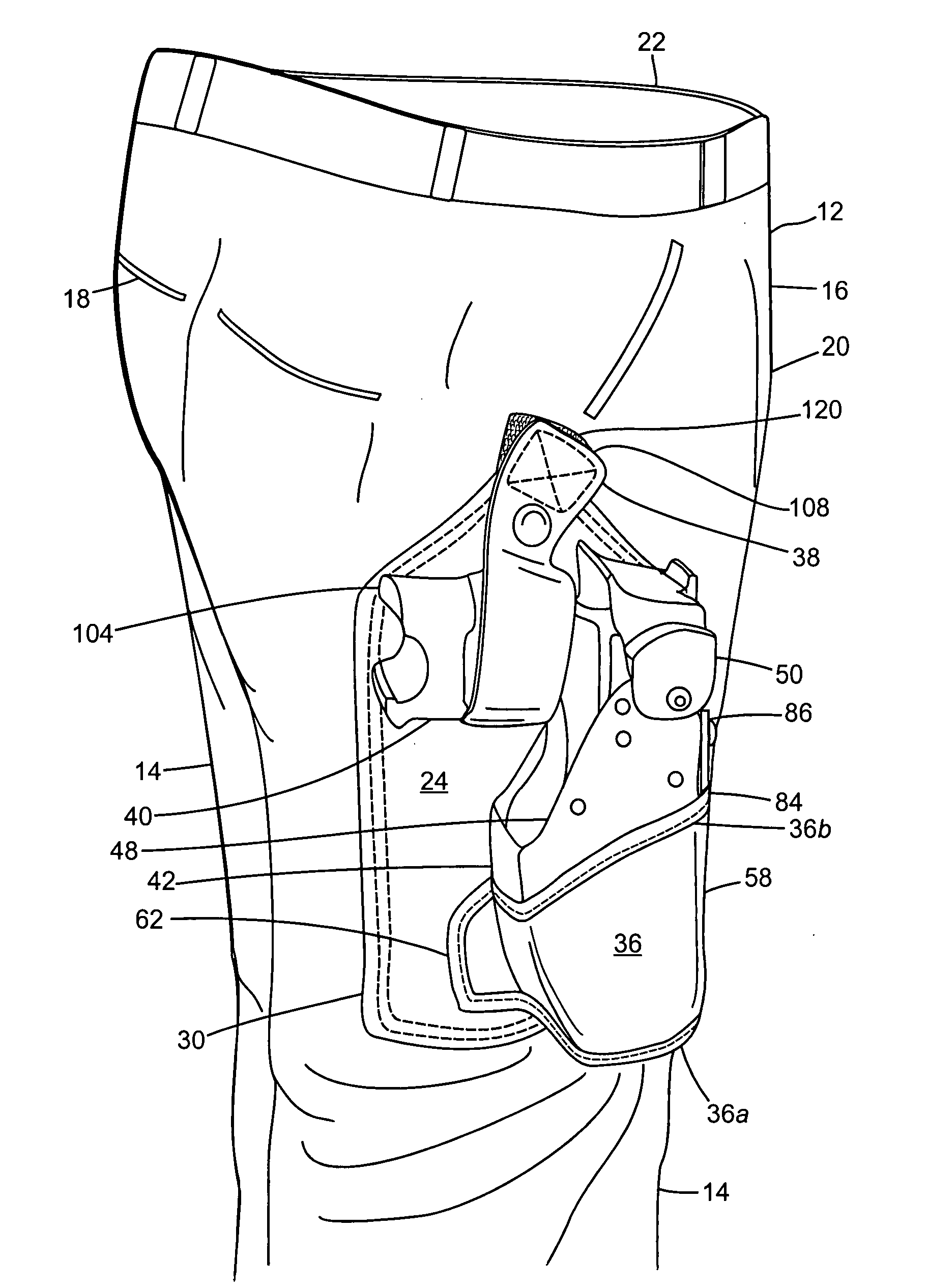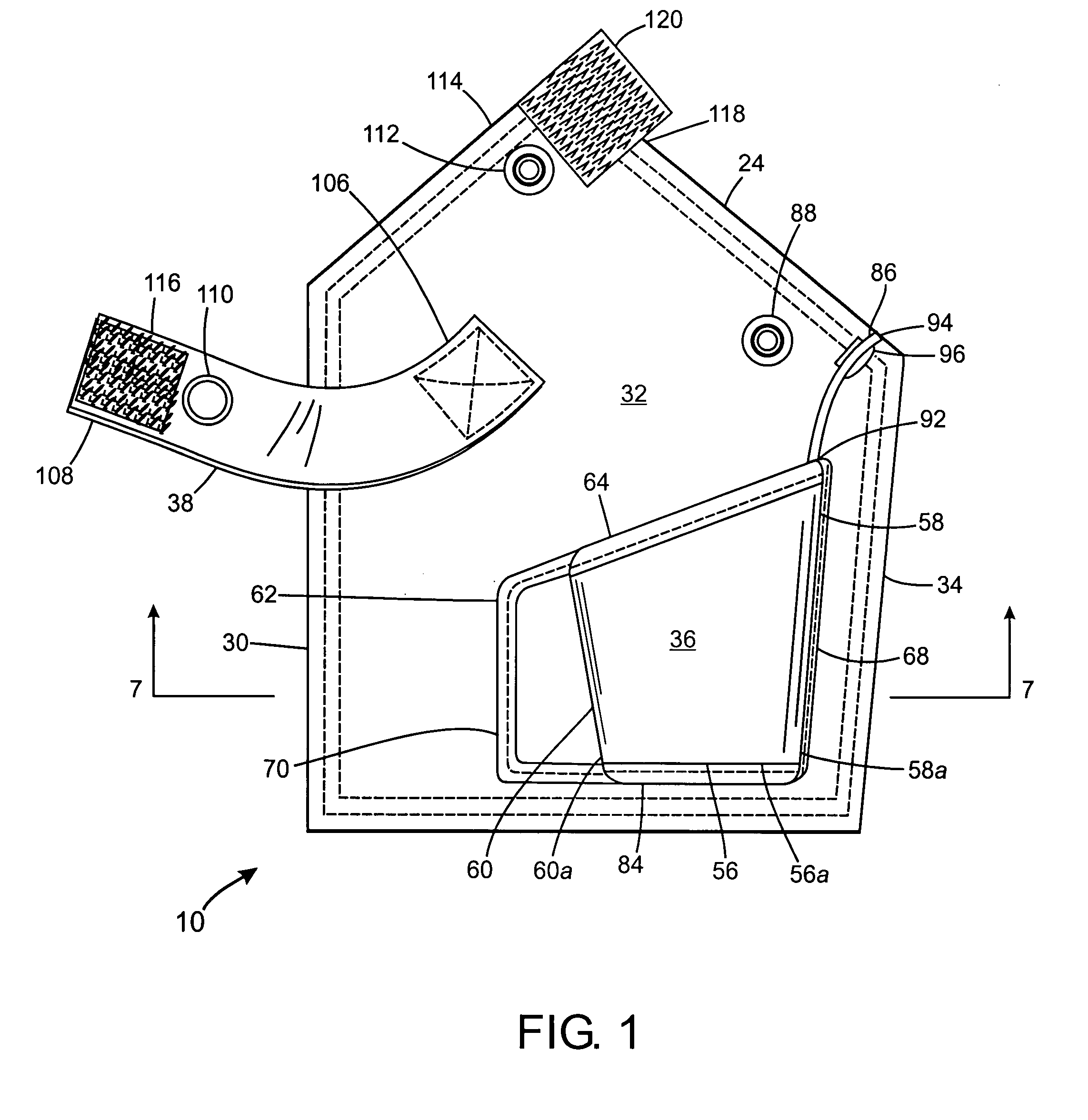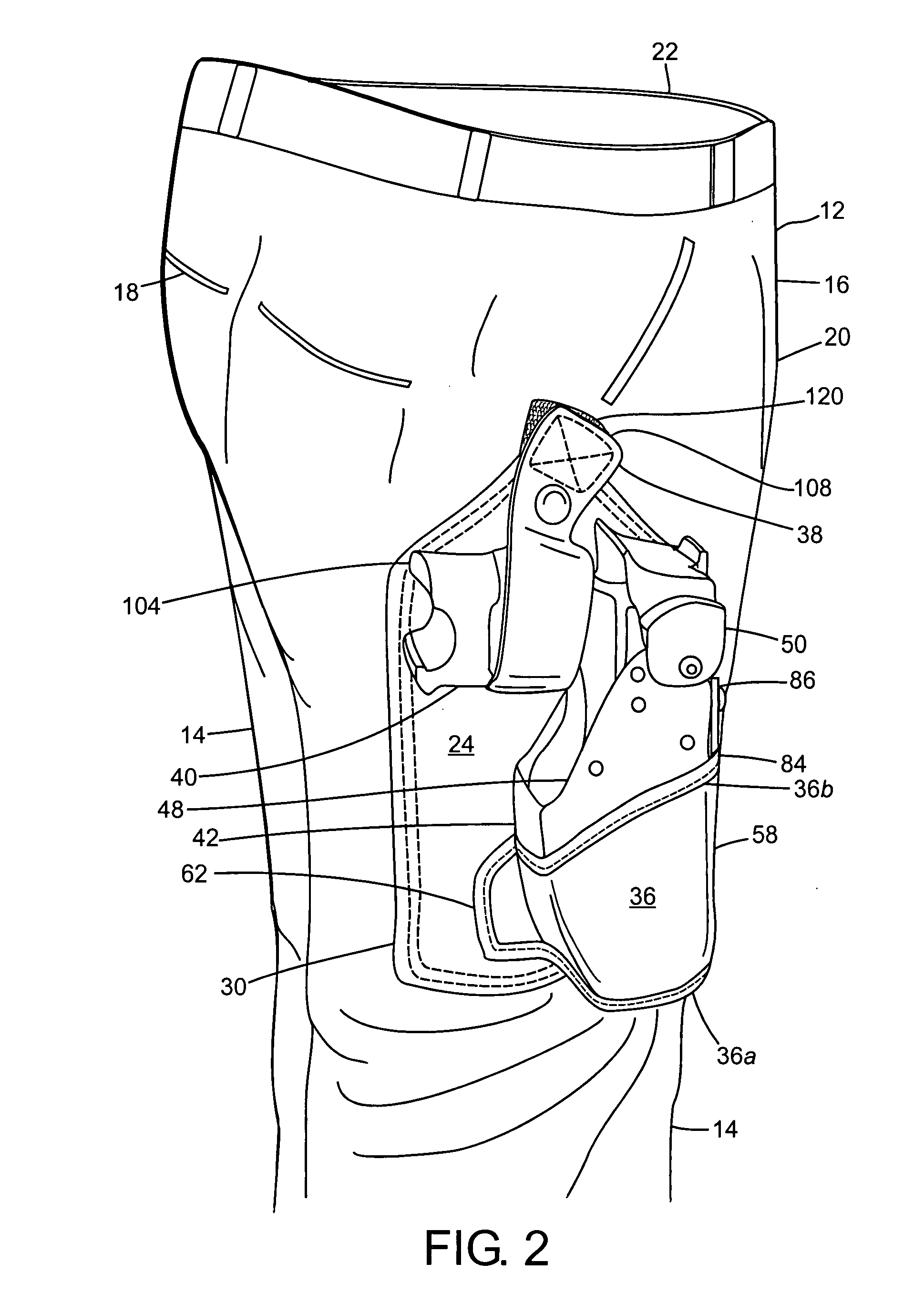Because of this
dual purpose and recognizable functionality, these belts may become very heavy and discomforting to the wearer, particularly when it is loaded with official equipment.
Notwithstanding the viability of these supplementary devices for containing official equipment, each may comprise a unique
advantage and
disadvantage central to the aspect of concealment, wearer's comfort, and ability to
gain quick and easy access to the official equipment during an emergency or in a crisis situation.
A
vest configured for wear underneath an outer garment like a shirt or jacket may further serve in concealing official equipment such as a firearm, while a
vest configured for outer wear may promote convenience and ready access to the official equipment, but unduly compromising an often needed function of concealment.
Regardless of the configuration, an added layer of clothing can promote a distinct
disadvantage, particularly in
hot weather, where a wearer's body temperature may unacceptably increase during engagement of a strenuous activity.
To regulate body temperature, the wearer may be required to remove the
vest temporarily from time to time, which may compromise its continued functionality and possibly increase risk of loss of the official equipment.
The transition between outdoor and indoor environments may be a challenge especially if the official equipment stored within and on the vest needs to be accessible to the wearer at all times. Depending on the working conditions, a great number of outdoor to indoor and indoor to outdoor environmental transitions may be required during a typical workday, which consequently increases the number of times the vest must be repositioned about the wearer to sustain an acceptable level of climatic comfort.
A handbag, for instance, may be configured for effective containment of the official equipment by comprising a variety of specially shaped compartments, but its use preoccupies a law enforcement officer's hand.
Depending upon the circumstances, a law enforcement officer may be at a significant
disadvantage if one or both hands are not free and available for use during an undertaking of an official duty.
Additionally, since the handbag is not connected to the uniform in any physical manner, but to the individual, there may be an opportune moment for misplacement of the handbag during a momentary relief of duty.
However, since the shoulder bag is not integral to a law enforcement officer's uniform, it may also present an opportunity for misplacement.
Moreover, the straps or the harness assembly may unacceptably serve as means for grabbing and leveraging down the law enforcement officer in an uncompromising position during a close combat situation.
In either event, the availability of the official equipment for use by the law enforcement officer is unduly compromised and appreciably diminished during the line of duty.
However, a bag of this type may share the same location of the belt described above with its own number of compartments, which may lessen the overall effectiveness thereof for full and complete access to the official equipment or unacceptably increase the weight along and about the
waistline.
The challenge is that the vast majority of traditional holsters are designed for carrying conventional firearms and not non-lethal weapons, notably a Taser® device.
The most challenging aspect of holster use is balancing the need for securing and containing the firearm to prevent inadvertent misuse and providing quick and immediate access thereto during a crisis situation.
As with this configuration, however, an individual's capacity or ability to effectively withdraw a lethal or non-lethal weapon during an emergency or in a crisis situation may appreciably diminish to an unacceptable level.
 Login to View More
Login to View More  Login to View More
Login to View More 


